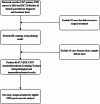Expression of CD73 and VEGF in salivary gland carcinomas: associations with clinicopathological characteristics in Vietnamese population
- PMID: 41174513
- PMCID: PMC12577387
- DOI: 10.1186/s12885-025-15129-1
Expression of CD73 and VEGF in salivary gland carcinomas: associations with clinicopathological characteristics in Vietnamese population
Abstract
Background: Salivary gland carcinoma is a rare malignancy with diverse histological subtypes and poor prognosis, particularly when diagnosed at advanced stages. Recent evidence suggests that biomarkers such as CD73 and VEGF may play important roles in tumor progression and immune evasion, yet limited studies have evaluated their expression and clinical significance in Southeast Asian populations. This study aimed to determine the expression rates of CD73 and VEGF in salivary gland carcinoma and identify clinicopathological factors associated with their expression in a Vietnamese patient cohort.
Methods: A retrospective study was conducted on 111 salivary gland carcinoma patients who underwent surgical treatment in Ho Chi Minh City, Vietnam. Immunohistochemical analysis of CD73, VEGF, and Ki-67 expression was performed on paraffin-embedded tumor samples. Logistic regression models were used to identify factors independently associated with biomarker expression.
Results: CD73 and VEGF were expressed in 53.2% and 66.7% of salivary gland carcinoma cases, respectively. CD73 expression was significantly associated with female gender (OR = 2.74, 95% CI 1.07-7.01), tumor stage T2 (OR = 6.59, 95% CI 1.36-31.90) and T4 (OR = 9.13, 95% CI 1.68-49.66), mucoepidermoid carcinoma subtype (OR = 10.62, 95% CI 2.77-40.69), and higher Ki-67 levels (OR = 3.61 per 10% increase, 95% CI 1.26-10.31). In contrast, lymph node level N2 was inversely associated with CD73 (OR = 0.08, 95% CI 0.01-0.70). VEGF expression was independently more likely in patients with normal body mass index compared to those who were overweight or obese (OR = 0.30 for overweight/obese vs. normal, 95% CI 0.12-0.78), and was also associated with increased Ki-67 expression (OR = 2.95, 95% CI 1.09-7.99).
Conclusions: High expression rates of CD73 and VEGF suggest their potential as prognostic biomarkers and therapeutic targets in salivary gland carcinoma. Their associations with tumor stage, histology, BMI, and proliferation index (Ki-67) highlight the need for further research on personalized treatments. These findings provide important insights into biomarker expression in Vietnamese salivary gland carcinoma patients and lay the groundwork for biomarker-driven therapeutic strategies.
Keywords: Biomarker; CD73; Immunohistochemistry; Ki-67; Personalized medicine; Prognosis; Salivary gland carcinoma; VEGF; Vietnam.
© 2025. The Author(s).
Conflict of interest statement
Declarations. Ethics approval and consent to participate: This study was conducted in accordance with relevant guidelines and regulations. All study procedures were reviewed and approved by the Biomedical Research Ethics Committee of the University of Medicine and Pharmacy at Ho Chi Minh City (Approval No: 406/ĐHYD-HĐ, dated October 25th, 2017) and the Ethics Committee of Ho Chi Minh City Oncology Hospital (Approval No: 2912/BVUB-CĐT, dated December 21 st, 2017). This study involved no interventional procedures on patients. Tissue samples were collected from FFPE already stored at the hospital for the purposes of H&E staining and immunohistochemistry. All participants were fully informed about the study’s objectives, procedures, and their rights, and they provided written informed consent. Personal information of patients was kept strictly confidential. Consent for publication: Not applicable. Competing interests: The authors declare no competing interests.
Figures
References
-
- Ettl T, Schwarz-Furlan S, Gosau M, Reichert TE. Salivary gland carcinomas. Oral Maxillofac Surg. 2012;16(3):267–83. - PubMed
-
- Global Cancer Observatory. Cancer Today. https://gco.iarc.who.int/today. [Accessed 20 May 2024].
-
- Salivary Gland Neoplasms. http://emedicine.medscape.com/article/852373. [Accessed 16 May 2024].
-
- Lukovic J, Alfaraj FA, Mierzwa ML, Marta GN, Xu W, Su J, Moraes FY, Huang SH, Bratman SV, O’Sullivan B, et al. Development and validation of a clinical prediction-score model for distant metastases in major salivary gland carcinoma. Annals Oncology: Official J Eur Soc Med Oncol / ESMO. 2020;31(2):295–301. - PubMed
MeSH terms
Substances
LinkOut - more resources
Full Text Sources
Medical
Research Materials
Miscellaneous



